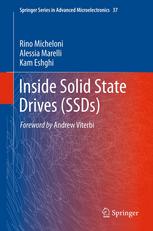

Most ebook files are in PDF format, so you can easily read them using various software such as Foxit Reader or directly on the Google Chrome browser.
Some ebook files are released by publishers in other formats such as .awz, .mobi, .epub, .fb2, etc. You may need to install specific software to read these formats on mobile/PC, such as Calibre.
Please read the tutorial at this link: https://ebookbell.com/faq
We offer FREE conversion to the popular formats you request; however, this may take some time. Therefore, right after payment, please email us, and we will try to provide the service as quickly as possible.
For some exceptional file formats or broken links (if any), please refrain from opening any disputes. Instead, email us first, and we will try to assist within a maximum of 6 hours.
EbookBell Team

4.0
76 reviewsSolid State Drives (SSDs) are gaining momentum in enterprise and client applications, replacing Hard Disk Drives (HDDs) by offering higher performance and lower power. In the enterprise, developers of data center server and storage systems have seen CPU performance growing exponentially for the past two decades, while HDD performance has improved linearly for the same period. Additionally, multi-core CPU designs and virtualization have increased randomness of storage I/Os. These trends have shifted performance bottlenecks to enterprise storage systems. Business critical applications such as online transaction processing, financial data processing and database mining are increasingly limited by storage performance.
In client applications, small mobile platforms are leaving little room for batteries while demanding long life out of them. Therefore, reducing both idle and active power consumption has become critical. Additionally, client storage systems are in need of significant performance improvement as well as supporting small robust form factors. Ultimately, client systems are optimizing for best performance/power ratio as well as performance/cost ratio.
SSDs promise to address both enterprise and client storage requirements by drastically improving performance while at the same time reducing power.
Inside Solid State Drives walks the reader through all the main topics related to SSDs: from NAND Flash to memory controller (hardware and software), from I/O interfaces (PCIe/SAS/SATA) to reliability, from error correction codes (BCH and LDPC) to encryption, from Flash signal processing to hybrid storage. We hope you enjoy this tour inside Solid State Drives.